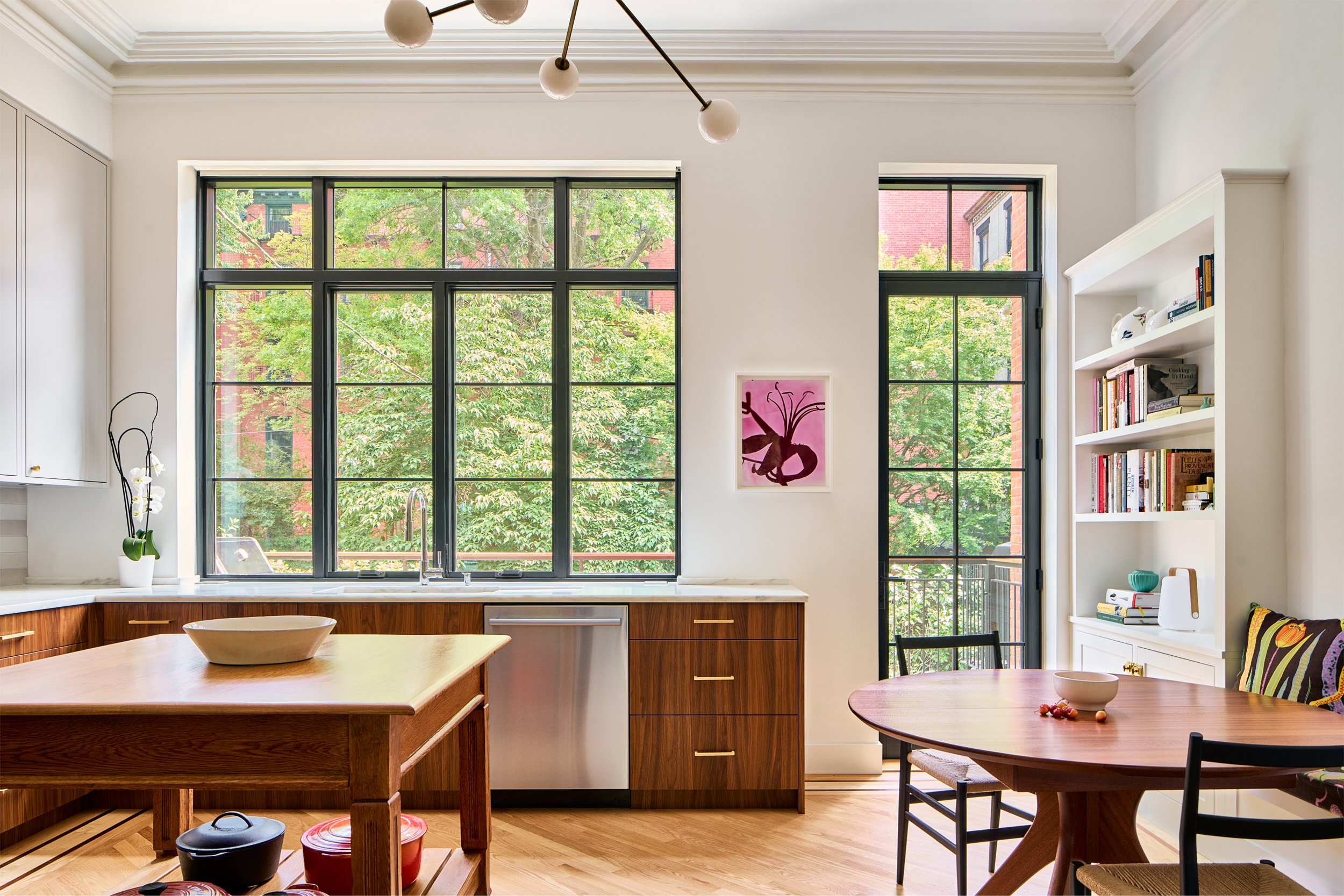Push to Make Burg's Fillmore Place a Historic District
This afternoon the Waterfront Preservation Alliance of Greenpoint & Williamsburg will submit a historic district nomination to the LPC for Fillmore Place. A couple of real estate developers built up the Williamsburg side street (bounded by Metropolitan, Grand, Driggs and Roebling) in the 1850s according to a master plan, and it contains an accumulation of…


This afternoon the Waterfront Preservation Alliance of Greenpoint & Williamsburg will submit a historic district nomination to the LPC for Fillmore Place. A couple of real estate developers built up the Williamsburg side street (bounded by Metropolitan, Grand, Driggs and Roebling) in the 1850s according to a master plan, and it contains an accumulation of typical mid-19th century brick row houses that were meant to be affordable for middle- and working-class residents. Henry Miller, who grew up nearby, celebrated Fillmore Place in Tropic of Cancer:
It was the most enchanting street I have ever seen in all my life. It was the ideal street for a boy, a lover, a maniac, a drunkard, a crook, a lecher, a thug, an astronomer, a musician, a poet, a tailor, a shoemaker, a politician. In fact this is just the sort of street it was, containing just such representative of the human race, each one a world unto himself and all living together harmoniously and inharmoniously…
In a more plainspoken fashion, the Waterfront Preservation Alliance says the street should be a historic district because of its architectural cohesiveness and its significance as a planned development.
Fillmore Place Historic District [WPA] GMAP





Thank you 12:43 PM…
in the grand scheme of brownstone bklyn, yes, this block isn’t a standout. but in w-burg, it is indeed worth preserving. I personally love these little pockets of history that have managed to survive everything the city has thrown at them. For a reference point, check out Manhattan Avenue between 104th and 105th on the UWS. It’s a collection of smallish brownstones landlocked by tenements and housing projects.
11:48 is right. There are SO many superior blocks all over Brooklyn, and at least as many with connections to historic writers. Nothing against THIS block, but I don’t see anything particularly special.
I disagree, 11:35. Your post suggests that everything starts out and stays equal. If that were the case, and housing was just housing, then there would be no difference between the highest priced condo and an apartment in the projects.
Most of the new construction in Wmsburg, for example, was built as luxury housing. I’m sure you know that means they (hopefully) used superior materials and construction methods, as well as superior finishing materials. You know, the granite countertops, Sub Zero and Viking appliances, better fixtures, lighting, floor materials, etc, etc. If they can’t sell all of these units, they may go down in price a bit, or worse case, become rentals, but they still aren’t going to be cheap rentals, or inexpensive condos. This has no effect on the vast majority of people who need affordable housing. The trickle down theory of housing doesn’t work here any more than in the economy. If Joe Gotbux moves from the Dakotah to a posh condo in Wmsburg, his apt on the UWS is not going to go to a teacher. Rich people moving around is only a lateral change, their apts go to other rich people. There is no trickle down the economic ladder.
I agree there needs to be much more housing for the majority of us. I don’t think razing a unique block is the answer. I also don’t think high density housing solves too much either. We are not ants content to live on top of each other. It doesn’t work in the projects, and lower density housing is advocated for that reason. These buildings are already serving housing needs for those in them. Why change that?
A visual delight? In what world? This is as ordinary a looking row of townhouses as you can find in Brooklyn.
bren have you ever gone beyond williamsburg?
while fairly nice, this row of houses is quite typical for many parts of brooklyn, most of which arent landmarked
he block should definitely be landmarked… it’s heartening to see that this block of charming rowhouses have been kept so well…
The architectural cohesiveness, and scale, is a visual delight.
Montrose Morris: you don’t know what you’re talking about. Housing is a luxury because there is a housing shortage. If you build 50,000 new “luxury” housing units, do you really think they will be able to keep the price high?
I just don’t understand why people on this site don’t understand economics. Let’s say the government only allowed Mercedes Benz to produce 30,000 cars a year. Demand would skyrocket, and they would only produce luxury cars to make even more money. Then, imagine, one day the government said you could build as many cars as you’d like. What would happen then? They would build millions, new companies would start making cars, and prices would plummet.
That is the same situation here. Bulldozing this one block and building a 100-story tower won’t do much to end the housing crisis. Building hundreds of buildings that size would certainly change things quite a bit.
This is how things used to be. Ever here of Harlem? Greedy developers built way too much luxury housing and guess what happened? There were no white people to move in, so black people got it for very little money.
There is no such thing as “luxury” housing. There is only housing, and when there is a shortage, it is expensive.
I agree with Zach. Why not save one block? Especially with literary provenance. All of Williamsburg shouldn’t look like a giant oversized mall. Variety makes a neighborhood interesting.
Bulldozing the block and putting up high density housing is not going to solve the housing crisis. It will be lux housing/condos, far beyond the reach of those who need housing the most.